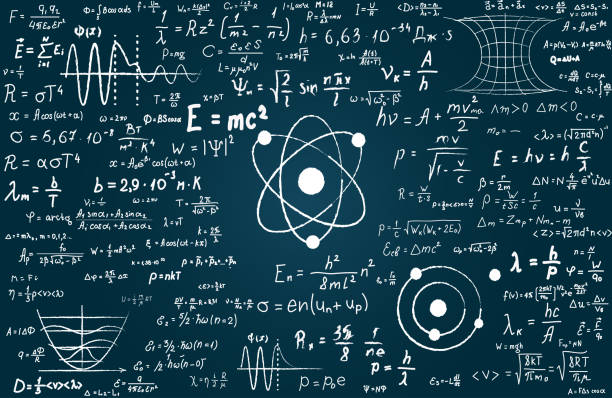This article was published as a part of the Data Science Blogathon.
Introduction
Physicists have reduced a quantum physics problem that required 100,000 equations into a bite-size task that only requires four equations using Artificial Intelligence (AI). Researchers at the US-based Flatiron Institute trained a machine learning tool to grasp the physics of electrons moving on a lattice using a great deal fewer equations while maintaining accuracy.
Source: iStock
This research, titled “Deep Learning the Functional Renormalization Group,” was published in the Physical Review Letters issue of September 23 and could completely transform how scientists study systems with lots of interacting electrons. Additionally, if scalable to other problems, this strategy might help develop materials with desired properties like superconductivity or usefulness for producing clean energy if it can be applied to other problems.
In this article, we will look at this work in further detail. Let’s get started right away!
Highlights- Artificial Intelligence and Quantum Physics
-
Physicists have reduced a quantum physics problem that required 1,00,000 equations into a bite-size task that only requires four equations using Artificial Intelligence.
-
Researchers trained a machine learning model to capture the physics of electrons moving on a lattice using a great deal fewer equations while maintaining accuracy. The trained model can be fine-tuned to work on other tasks without requiring to train the model right from scratch.
-
This research may significantly transform how researchers examine systems with lots of interacting electrons. And it may also help in the development of materials with desirable qualities like superconductivity or use in the production of clean energy if it is transferable to other problems.
Methodology- Artificial Intelligence and Quantum Physics
According to Domenico Di Sante, a visiting research fellow at the Center for Computational Quantum Physics (CCQ) of the Flatiron Institute, they started with a massive object of coupled Differential equations. Then, using machine learning, they reduced it to a size that can be counted on fingers.
The challenging issue relates to how electrons move on a grid-like lattice. When two electrons are present at the same lattice site, interaction occurs. With the help of the Hubbard model, scientists can learn how electron behavior gives rise to desirable phases of matter, such as superconductivity, in which electrons move through a material without resistance. The model also acts as a testing ground for novel techniques before they are applied to more intricate quantum systems.
Even for a small number of electrons and after using cutting-edge computational techniques, the problem requires a significant amount of computing power. That’s because interactions between electrons can cause quantum mechanical entanglements in their fates: even when they are far apart on different lattice sites, the two electrons cannot be treated individually. Hence physicists need to deal with the electrons collectively rather than individually, making the computational challenge exponentially more challenging.
One method of studying a quantum system is by using a renormalization group. Physicists use this mathematical tool to examine how the behavior of a system, such as the Hubbard model, changes when researchers alter properties like temperature or consider the properties on various scales. Unfortunately, a renormalization group that keeps records of all potential couplings between electrons can have tens of thousands, hundreds of thousands, or even millions of individual equations that require to be solved. The equations are challenging: Each represents a pair of electrons interacting.
Di Sante and his co-researchers wondered whether they could use a neural network to make the renormalization group more manageable. The neural network can be thought of as a cross between a frantic switchboard operator and survival-of-the-fittest evolution. At first, the machine learning (ML) model creates connections within the full-size renormalization group. The neural network then adjusts the strengths of those connections until it finds a smaller set of equations that yields the same solution as the original. Ultimately, the ML model captured the Hubbard model’s physics with four equations.
Training the machine learning (ML) model took a lot of computational power and was trained for several weeks. This trained model can be fine-tuned to work on other tasks without requiring to train the model right from scratch. The researchers are also investigating what machine learning is “learning” exactly about the system, which may offer additional insights that would otherwise be challenging for physicists to understand.
Finally, the main burning question is how well this novel method applies to more complicated quantum systems, such as materials with long-range electron interactions. There are also intriguing possibilities for applying this method to other disciplines that work with renormalization groups, like cosmology and neuroscience.
Conclusion
In this article, we explored how Artificial Intelligence can reduce a quantum physics problem requiring 100,000 equations into a bit-size task requiring only four equations. The following are the major key takeaways from this article:
- Physicists have reduced a quantum physics problem that required 100,000 equations into a manageable task that only requires four equations with the help of Artificial Intelligence.
- With the help of the Hubbard model, scientists can learn how electron behavior gives rise to desirable phases of matter, such as superconductivity. However, Even for a small number of electrons and after using cutting-edge computational techniques, the problem requires significant computing power.
- One method of studying a quantum system is by using a renormalization group. However, a renormalization group that keeps records of all potential couplings between electrons can have a zillion of individual equations that require to be solved, which is an inefficient approach.
- In contrast, the machine learning (ML) model can be used to create connections within the full-size renormalization group. The neural network then adjusts the strengths of those connections until it finds a smaller set of equations that yields the same solution as the original. Ultimately, the ML model captured the Hubbard model’s physics with just four equations.
- The trained model can be fine-tuned to work on other tasks without requiring to train the model right from scratch.
That concludes this article. Thanks for reading. If you have any questions or concerns, please post them in the comments section below. Happy learning!
The media shown in this article is not owned by Analytics Vidhya and is used at the Author’s discretion.





